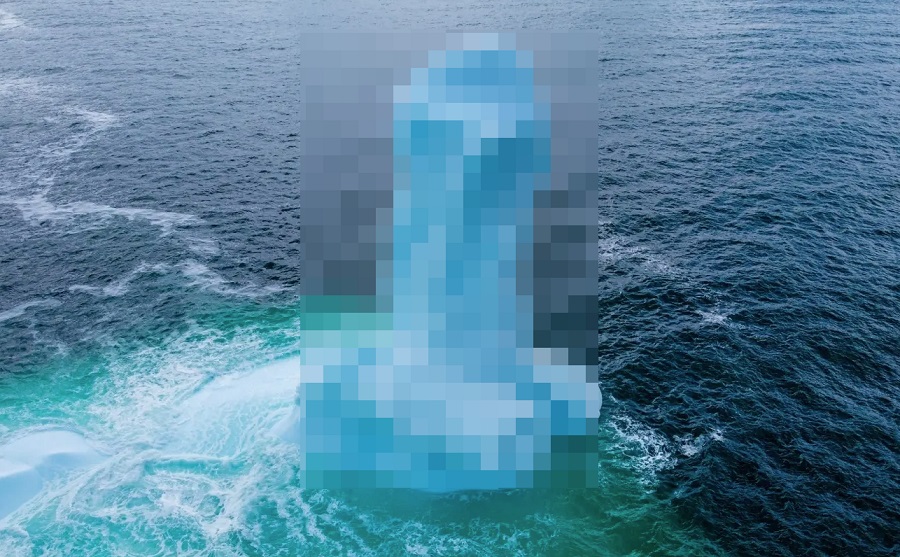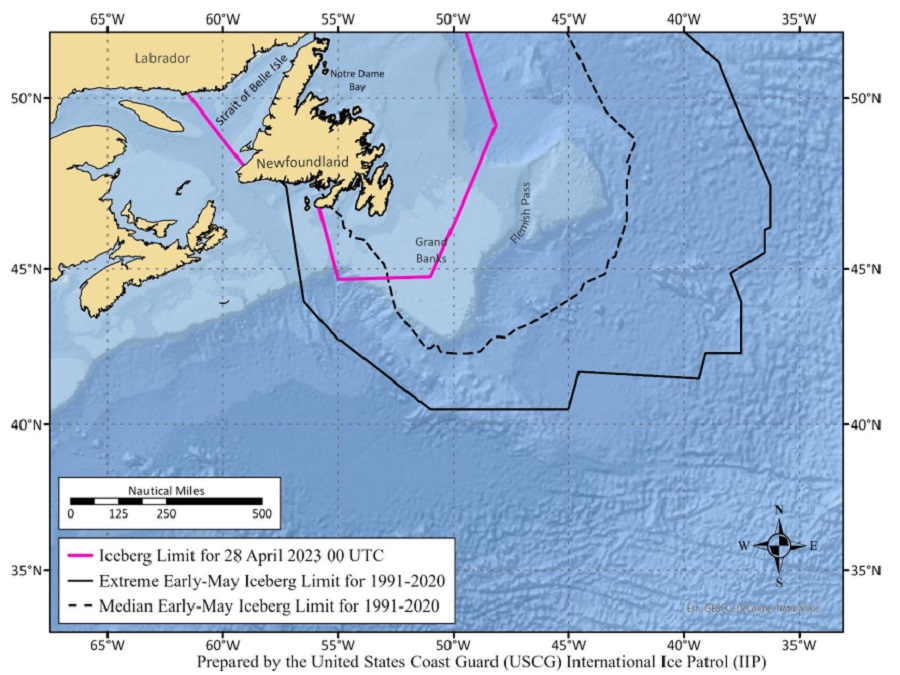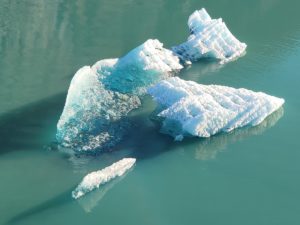
A peculiarly shaped iceberg floating around Conception Bay, Newfoundland and photographed by a drone operator from Dildo, Canada, has toppled over, but experts are warning iceberg related dangers remain for ships sailing across the North Atlantic. The iceberg, considered “x-rated” to some, is raising awareness as it goes viral for the ongoing threat ice has for ships in the ocean.
The International Ice Patrol is an organization with the purpose of monitoring the presence of icebergs in the Atlantic and Arctic Oceans and reporting their movements for safety purposes. It is operated by US Coast Guard but it is s funded by nations interested in trans-Atlantic navigation. Joining the United States in funding this operation are Belgium, Canada, Denmark, Finland, France, Germany, Greece, Italy, Japan, the Netherlands, Norway, Panama, Poland, Spain, Sweden, and the United Kingdom. The International Ice Patrol was established in 1914 in response to the sinking of RMS Titanic, which collided with an iceberg on its maiden voyage from Southampton, United Kingdom, to New York City, New York. The primary mission of the Ice Patrol is to monitor the iceberg danger in the North Atlantic Ocean and provide relevant iceberg warning products to the maritime community.

According to the Canadian Ice Service, more than 200 icebergs have been spotted off the coast of Newfoundland alone as of last week. Due to the presence of ice in the ocean, even some cruise lines are altering their course.
It’s amazing what can be found floating in the North Atlantic this time of year. https://t.co/hSNemNxTvT
— the Weatherboy (@theWeatherboy) May 4, 2023
This is not the first time icebergs have interfered with Norwegian Cruise Line. Last June, the Norwegian Sun struck an iceberg off the coast of Alaska, sinking dream vacation plans for thousands of people on board that ship.
According to a spokesperson for the cruise line, “while transiting to Hubbard Glacier in Alaska, Norwegian Sun was engulfed by dense fog, limiting visibility, and resulting in the ship making contact with a growler.”
A growler is a small iceberg. Typically, a growler is less than 6.6 feet across that floats with less than 3.3 feet showing above water. The next larger iceberg size is known as a “bergy bit”; bergy bits are usually less than 15 feet in size and are generally spawned from disintegrating icebergs.
After the impact, the ship slowed its forward speed, skipped its scheduled stop in Skagway, Alaska , and limped along to Juneau, arriving there a day before it was scheduled to arrive. Once in Juneau, divers jumped in and explored the outside of the ship underwater to determine if there was any damage.
The damage discovered was significant enough to cancel the balance of that cruise and all cruises since through to this week. Fortunately, while travel plans were altered, no one was hurt in the iceberg impact: Norwegian reported that there were no injuries to crew or passengers on-board and all services on-board remained fully operational while getting everyone back to port. The ship limped to shore and departed their guests; from there, the ship went out of service for repairs for the run-in.

Of course the most famous run-in between a ship and an iceberg was the Titanic. The luxury liner sunk in the early morning hours of April 15, four days into its maiden voyage from Southampton to New York City. Less than a third on board the Titanic survived the disaster which ultimately claimed 1,635 lives. The disaster led to major changes in maritime regulations to implement new safety measures, such as ensuring that more lifeboats were provided, that lifeboat drills were properly carried out and that radio equipment on passenger ships was manned around the clock. The disaster also lead to the creation of the International Ice Patrol to monitor the presence of icebergs in the North Atlantic for all ships.